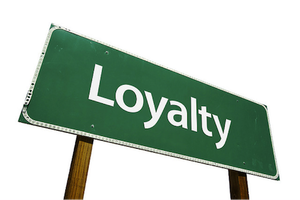 There’s lots of yelling at football games, but for the Oregon Ducks, that yelling is relegated to the stands. The old stereotype of coaches shouting in the faces of players to “motivate” them has given way to a kinder, gentler approach. “It’s not about who can scream the loudest,” Mark Helfrich, the Ducks’ second-year coach told the Wall Street Journal (http://on.wsj.com/1IOCVE3). “We have excellent specialists in their field, great leaders of young men…There’s hopefully a lot more talking than yelling.” “When you put your arm around a guy and say, ‘This is how it could be done better,’ they understand you care about them and you just want what’s best for the team,” said Marcus Mariota, Oregon’s Heisman Trophy-winning quarterback. “Those guys already understand that they did wrong.” The Ducks, who have embraced a more soft-spoken philosophy since implementing a “horizontal leadership structure” in 2009, are not alone in substituting constructive communication for a drill-sergeant approach. More organizations are doing likewise as their workforces are increasingly populated by Millennials, who are more comfortable being approached as collaborators. While we are unabashed Ducks fans, that is not our only reason for endorsing the team’s use of constructive communication as a motivator. It is part of the growing wave of organizations that understand the benefits of viewing each of their members as leaders in their own way. We want to hear: Is there a place for quieter talking and less yelling in sports? Have you known people – on or off the field -- motivated by yelling, or do you think there is always a better alternative? Join the conversation and click "comments" on our Community of Practice Forum.
1 Comment
We all resolve to build new habits, but many of us lose steam before long. Writing in Entrepreneur, behavioral scientist James Clear offers three tips to stick with it.
1. Start with a really easy habit. Our example: Suppose you want to have more engagement with the people you work with. Making it a habit to say “good morning” to your team members is a simple starting point. 2. Figure out what’s holding you back. Clear says it’s our judgments about ourselves and others that get in our way. Our example: “I am too introverted to be more interactive with co-workers.” Or: “If I become more interactive they might think I’m being insincere.” Of course these are not sound rationales. Everyone is more nuanced than that! 3. Develop a failure fallback. No one changes a habit without setbacks. When (not if!) it happens to you, get back on track as soon as possible. We want to hear! Are you building any new good habits so far this year? What techniques are you using for making them permanent? Join the conversation and click "comments" on our Community of Practice Forum.  One morning in Bangalore, India, tech startup founder Archana Patchirajan, told her entire staff she had to let them go because the venture had run out of funds. Amazingly, her high-caliber engineers, who had their pick of jobs, said they would rather work for half their pay than leave her. They worked so hard that a few years later the company, Hubbl, sold for $14 million. Now Archana continues to work on startups from the US and her staff, thousands of miles away, continues to work for her. When asked why they are so loyal, the staff mentioned their boss’s ability to be honest with them, give them time to analyze mistakes, and even share her own doubts and vulnerabilities. In short, she was authentic. http://bit.ly/1uZG5y0 Some leaders try to project an image of perfection and certainty at all times in order to be respected by others, but pretense often backfires. Our brains are wired to read cues so subtle that even when we don’t consciously register those cues, our bodies react. For example, according to research by James Gross at Stanford University, when someone is angry but hides their feelings we may not realize consciously they are angry (they don’t look angry); nevertheless, our own blood pressure will rise. On the other hand, when we are around someone who is authentic and vulnerable we perceive them as trustworthy—and that trustworthiness inspires engagement and loyalty. We want to hear: Are you ever aware that someone is trying to project a false image, and how do you react? Are there leaders who inspire you with their willingness to appear vulnerable? Join the conversation and click "comments" on our Community of Practice Forum. Image Credit: Enrique Burgos  If you’re familiar with bifocal eyeglasses, you know they allow you to view the same scenario from different perspectives. Anthony Kronman of Yale Law School uses “bifocalism” as a thought-provoking analogy. As he put it: “Anyone who has worn bifocal lenses knows that it takes time to learn to shift smoothly between perspectives and to combine them in a single field of vision. The same is true of deliberation. It is difficult to be compassionate, and often just as difficult to be detached, but what is most difficult of all is to be both at once.” Seeing a situation from another’s perspective is key to any successful negotiation, compromise, or conflict resolution. Recently writing in The New York Times, David Brooks posited that we get better at this skill as we age (http://bit.ly/bifocialism ) But why wait? We can aid detachment by asking ourselves, “How would an outsider view the situation?”, or “How would I view this if I set my emotions aside?” As for compassion, it is essential to remember that all of us have our own perspective, because everyone is unique. As Anais Nin said, “We don’t see things as they are, we see things as we are.” We view situations, through the prism of our own experiences, values, and culture. We may never fully be able to step into another person’s world, but we can set a goal to regard our own perspectives as just one way of understanding, among many other ways. We want to hear. Do you find it easier to view situations with detachment and compassion as you mature? If so, why do think that is? Join the conversation and click "comments" on our Community of Practice Forum. Image Credit: Thomas Hawk https://www.flickr.com/photos/thomashawk/ |
Archives
July 2024
Categories
All
|
|
Glaser & Associates, Inc.
Executive Offices 1740 Craigmont Avenue, Eugene, OR 97405 541-343-7575 | 800-980-0321 [email protected] |
© 2019 Glaser & Associates. All Rights Reserved.


 RSS Feed
RSS Feed